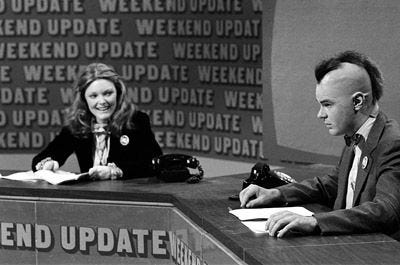Point-Counterpoint With The Salzillo Brothers (Part 1):
Michael's Version: Addressing the Concerns About the Culture Clash
Feel free to check the entire blog archives from “Political Pulse” & “Salzillo Report” on the 2024 primary cycle, rural outreach, redistricting litigation, base dynamics, campaign organization, the current media landscape, the issues at stake, Project 2025, Build Back Better, the progressive movement, the 2024 Election autopsy, the true story about former 2024 VP contender Gina Raimondo, and much more.
In this series of posts, my brother David—the author of Salzillo’s Two Cents (check it out if you haven’t already)—and I will be doing most of the commentary on some of the most frequent post-campaign criticisms out there.
Before I let him take over, I did want to spotlight an analysis in Jacobin from Milan Loewer and Jared Abbott recently on the Harris campaign shift from economic populism towards the typical centrist Democratic presidential message. I note this because of how they describe the timeline of this message shift and the role of the people behind that shift, and how they have witnessed the change by reviewing all of the Vice President’s campaign speeches over the short stretch. Definitely an article to bookmark if you haven’t already.
The shift in that messaging is going to be long studied for those interested in campaign communication and electoral politics generally. That’s my 2024 prediction.
I also want to highlight something several people have either told me or asked me about. What role did the culture wars play in Trump’s reelection?
Here’s my answer. While there might be good intentions to it, the role of promoting identity—particularly on a regular basis—has proved to be an alienating force in American politics. Look no further than Hillary Clinton. “If I am playing the women’s card, then deal me in” is not the way to win over voters. It was not even the way to win over white women and suburban voters. Hillary Clinton actually lost white women and suburban women to Trump in 2016.
I have said it before, and I will say it again: it is time for the Clintons and their DLC wing from the 90s of the Democratic Party to be put out to pasture. The Democratic Party’s core values should not represent Mark Cuban, or Silicon Valley, or Mark Zuckerberg, or Oprah Winfrey. While well-intentioned, these celebrity showings on the eve of an election do not make the working-class think that their concerns are being respected and addressed. Voters are turned-off when you only appeal to them just weeks before an election with a bombardment of celebrity cameos.
The Democratic Party should be the party of plumbers, construction workers, rail workers, autoworkers, truck drivers, letter carriers, farmers, and fast food workers. They should be more of the people representing us in Congress and otherwise. We should have a new generation of young people and more bright new leaders in Washington DC focused on bread-and-butter issues that affect everyone, regardless of their race, gender, religion, or other identities.
Where are all the Dan Osborns in the halls of Washington? The union organizers, the labor activists, the passionate troublemakers? People outside the coasts?Unfortunately, our party does not prioritize putting them in positions of leadership for now. That type of talent is worth more than any $1 billion that the Harris campaign squandered.
Let’s take a look at Massachusetts, our neighbor to the north, as a prime example. It is equally blue—if not more so—than Rhode Island. In Lawrence, Massachusetts, rather than worrying about so-called identity politics, the party should have focused on the economic challenges of middle and working-class people. According to the data, Trump saw a 46% rise in support in the former predominantly Hispanic mill town. Ironically—or perhaps not so ironically—Senator Elizabeth Warren outperformed Harris in the same city. Similarly, Warren won Fall River, even as Trump flipped the Spindle City for the first time since the 1920s. The stunning data speaks for itself.
In just the past couple weeks with late returns coming in from California and other Western states, we have learned that Democrats who focused heavily on economic issues won, even in areas that Trump carried. There are currently 13 House Democrats who won in congressional districts that Trump carried this cycle. Take Jared Golden in Maine CD-2 as a perfect instance of a Democrat in Trump Country. He held his district despite the fact that Trump won by 9 points over Harris.
Moreover, on the national U.S. Senate landscape, 4 Senate Democrats won in states that Trump simultaneously carried in November. In particular, look to future rising star in the Democratic Party, Senator-elect Ruben Gallego from Arizona. Unlike the Harris campaign, Gallego focused more on the specifics of issues such as price-gouging, antitrust enforcement with Lina Khan, and commonsense and humane border security.
Sounds quite different from the message that the Mark Cuban elites wanted. A brief chronological overview: In August, Harris did not ever mention once about raising the federal minimum wage in her Democratic National Convention acceptance speech. When she came out of the convention with a modest bump, she had an opportunity to further enhance her standing by addressing key Democratic base issues, such as college affordability, building upon the Biden infrastructure package and climate agenda, or appealing on a mass scale to rural voters. Her campaign played conservative and cautious, turning toward the center, rather than being bold and outfront on original campaign promises and economic empowerment.
The Democratic Party has always prided itself on being an inclusive, big tent national party, as opposed to the traditional Republican, business-dominated, and corporate-owned party. While it should continue to strive to represent everyone, it must focus on its core base of working and middle class Americans. It must focus on racial equality and economic opportunity for laborers and small business entrepreneurs. It must focus on providing more affordable and efficient healthcare, reinstating the child tax credit, raising the minimum wage, making college affordable, increasing opportunities for trade schools, strengthening the right to organize, supporting unions, and many of the other things we talk about on a regular basis in this blog throughout the last several months, such as creating good-paying jobs in the green-blue economy.
I do believe the transgender ads against Harris were very effective and consequential, as the Willie Horton ad was in 1988. No, that does not mean Democrats should suddenly become anti-transgender. We can continue to vouch for those who are vulnerable (like transgender students who want to play in sports either on some professional basis separately or in intramural activities). At the same time, we should have an open ear to how and why the thought of even a rare-to-nonexistent situation like a transgender athlete dominating girls’ sports would make voters uncomfortable. There is no easy answer or solution I will come up with here, even for an issue that is really not as relevant as it is made to be..since transgender Americans comprise only about 1.6% of the population (if that).
But I do think it is worth considering the last part of the ad. “Kamala Harris is for they/them. Donald Trump is for you.” That summarizes the brand reputation that has long been in design: that the Republican Party is the regular man’s working class party, and the Democratic Party is the party of coastal elites, uppity overly-academic college students, long-haired professors, Hollywood celebrities, the donor class, and other out-of-touch people in fancy suits. That is the true magic behind the effectiveness of those ads about what that small campaign interview clip from 2019 was meant to convey more than anything else. It made Trump “seem normal.” It made him seem more focused on economics and the issues that matter to working people.
What are we doing with Jennifer Lopez and Megan Thee Stallion as the standard-bearers at a Democratic rally? How did that help with the rural Black counties across the country that voted Republican in November for the first time since Richard Nixon and Ronald Reagan?
How did J-Lo and Megan Thee Stallion help in the Rio Grande Valley, which flipped Republican for the first time since the late 1890s and early 1900s?
Lastly, on a positive note, kudos to Senators Sherrod Brown and Jon Tester for waging a valiant and steep uphill climb in the deep red states of Ohio and Montana respectively. Both lost, but outperformed Harris significantly, again by focusing on the needs and values of core Democratic voters. Also, Senator Bob Casey of Pennsylvania waged an equally admirable campaign in the Commonwealth where Trump waged a successful major campaign push to enlarge his base of rural voters.
So with that, my brother David will take over quickly countering some of the most common punditry you are hearing right now. Enjoy the upcoming show:






